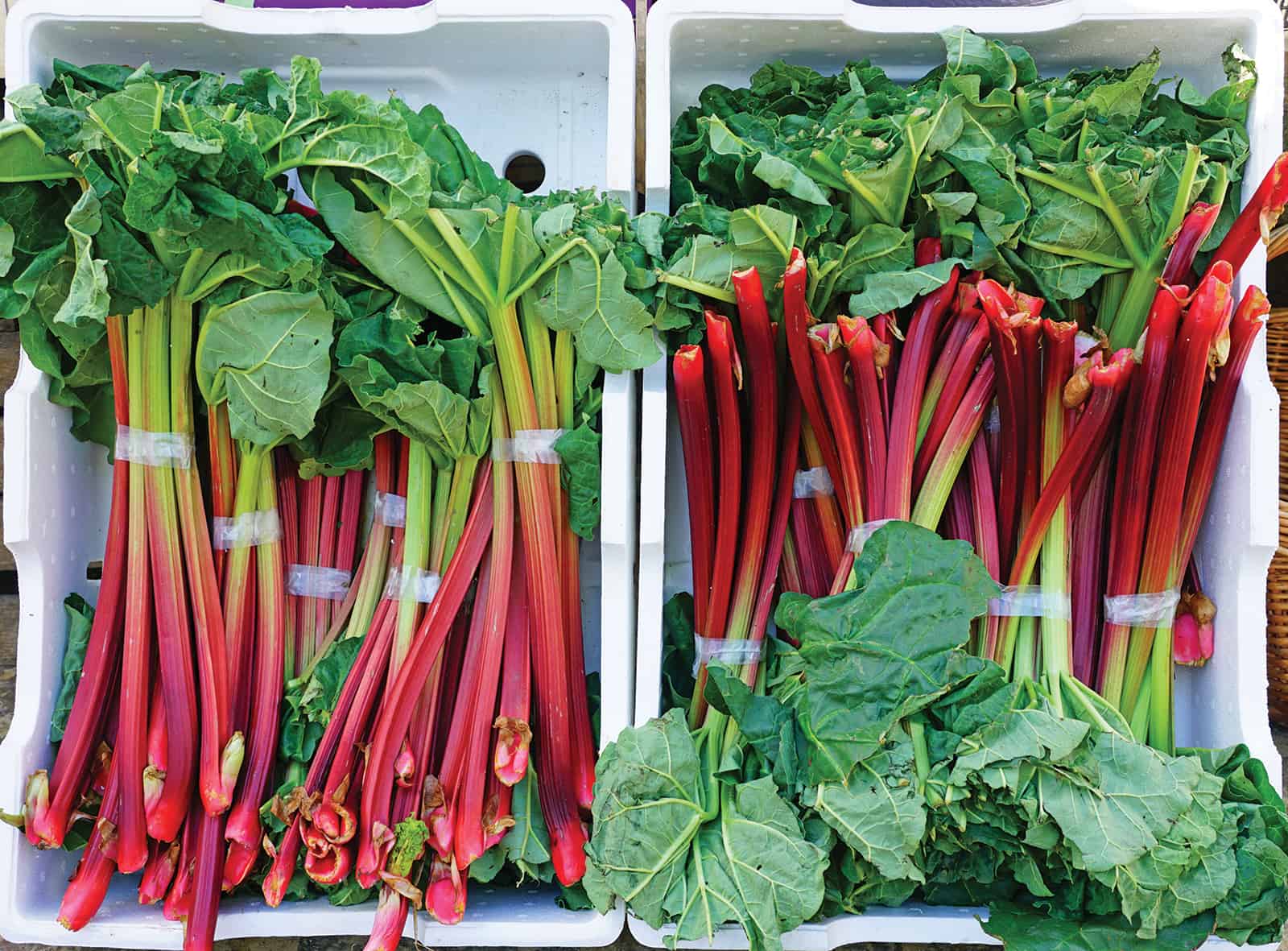
Come April, you might notice a bright pop of pink hitting the market. Those celery-like, fuchsia stalks are rhubarb, folks, and their presence signals a joyous moment: the arrival of spring. Although the vegetable mainly stars in pastries these days, rheum rhabarbarum was historically valued for medicinal qualities. The native of central and northern Asia—and relative to buckwheat and sorrel—was used as a laxative and purgative in China for hundreds of years before it was brought to the West in the 14th century via the Silk Road. At one point, its curative properties were in such high demand that rhubarb became more valuable than cinnamon, saffron, and even opium in places like France and England.
It wasn’t until the late 18th century, however, that varieties more suitable for culinary uses were cultivated, and it took a few more decades before recipes featuring rhubarb showed up in cookbooks. Today, the winter-hardy and drought-resistant perennial plant thrives in cold climates and is beloved, particularly in the UK and US, for its unique tart flavor. Peak season is typically from April to September, although in England—where it’s grown and harvested by candlelight in pitch-black sheds— “forced” rhubarb is available as early as December. Color isn’t indicative of quality or ripeness, but generally speaking, the deeper the varietal’s shade, the more tender and sweet it will be. Seek out stalks that are shiny and firm, and make sure to remove any leaves—their high levels of oxalic acid render them inedible.
Interested in growing your own rhubarb? Begin with one-year crowns rather than seeds, and plant them in early spring or late fall when temperatures are below 40ºF. Refrain from harvesting until the following the year and don’t forget to remove flowering stalks as they appear. Depending on the varietal, pull—don’t cut—stalks when they’re 12 to 18 inches long.
Rhubarb is beloved for the addictive tang it brings to pies and tarts, but its distinct, bright flavor lends itself to more than buttery, flaky pastry. Thinly sliced, raw rhubarb can be folded into cakes or muffins or tossed into a salad with feta or Stilton for crunch and zing. Cooked down into a sweet compote, it goes well with creamy ingredients such as custard or yogurt. A savory sauce, on the other hand, can be served as a delectable counterpoint to pork, duck, or even chèvre on toast. Whiz it into a chilled soup for dessert as the Norwegians do, or take a cue from the Persians and stir it into stews for a pleasingly sharp flavor. Or don’t cook at it all, and instead drink it: An infused syrup livens up cocktails or seltzer as does Italian rabarbaro—a low-alcohol aperitif known for its delectable yet healthful properties.
So, if you stumble upon rhubarb this season, rejoice! With its brilliant shades of pink and green and puckering bite, this harbinger of spring can’t help but excite—for warm and delicious days to come.



